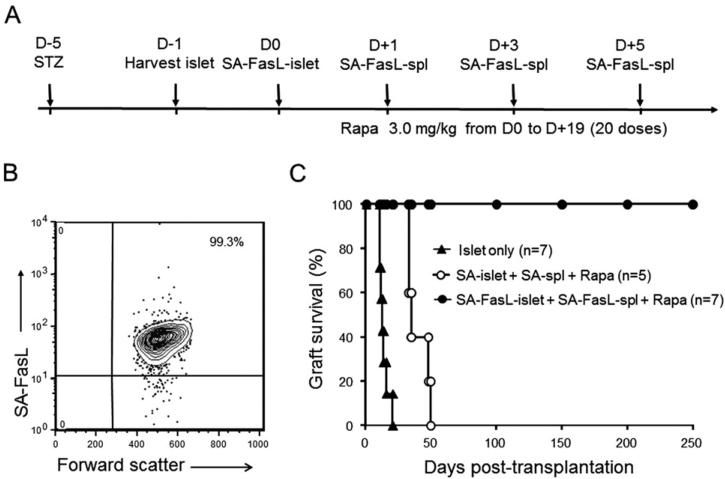Fig 1.
SA-FasL–engineered allogeneic islet grafts survive indefinitely in chemically diabetic female NOD mice. (A) Schematic diagram of the immunomodulation protocol used in the present study. Female young (6–7 weeks old) NOD mice were made diabetic with the use of streptozotocin and then transplanted 5 days later with allogeneic female C57BL/6 SA-FasL–engineered islets (SA-FasL–islet) under the kidney capsule (~500 islets/mouse) in conjunction with transient use of rapamycin (Rapa; 3.0 mg/kg daily for 20 doses). Graft recipients were also given SA-FasL–engineered donor splenocytes (5 × 106 cells/injection) intraperitoneally on days 1, 3, and 5 after islet transplantation. Unmodified islets or streptavidin control protein–engineered islets (SA-islet) and splenocytes (SA-spl) were used as control samples. (B) Flow cytometric analysis of SA-FasL protein on the surface of engineered splenocytes. (C) Allogeneic islet graft survival.

